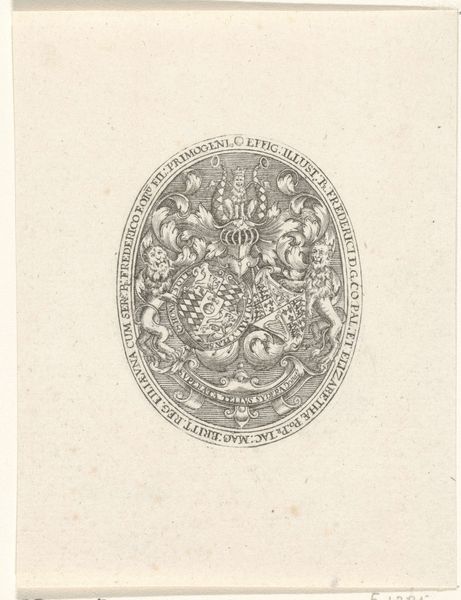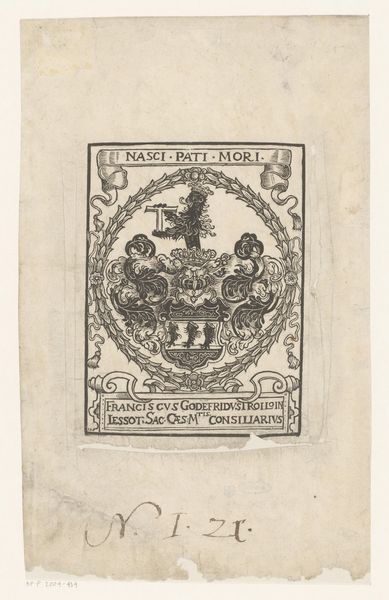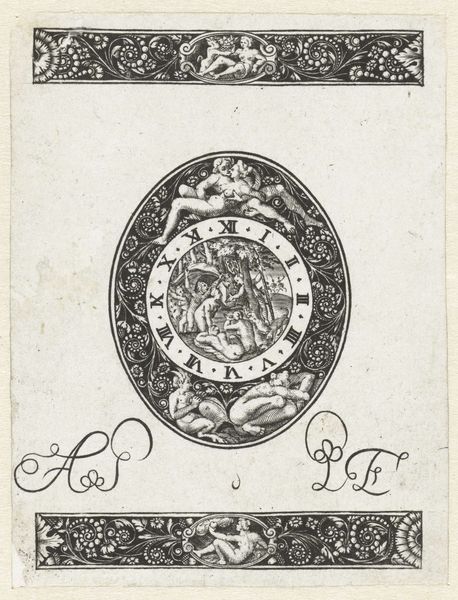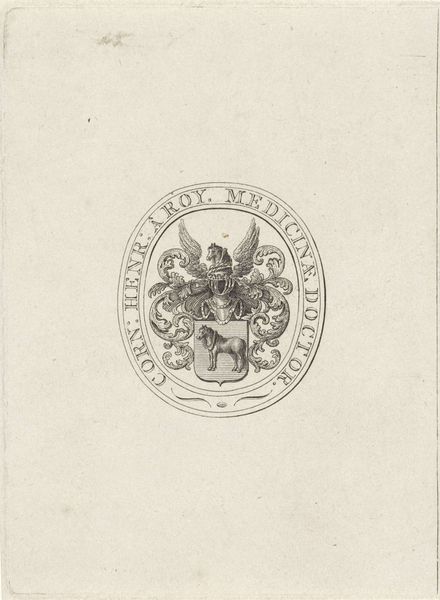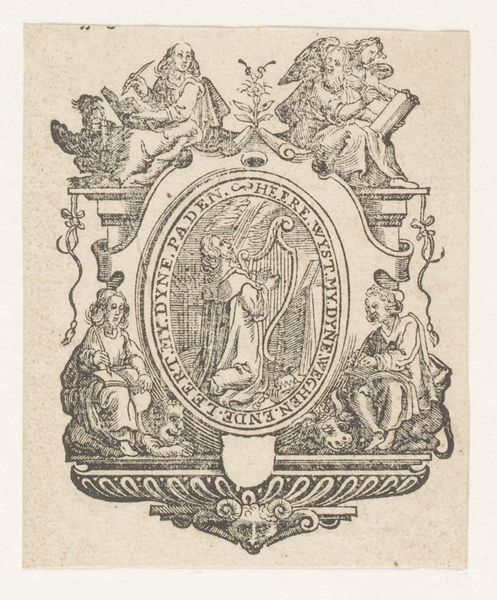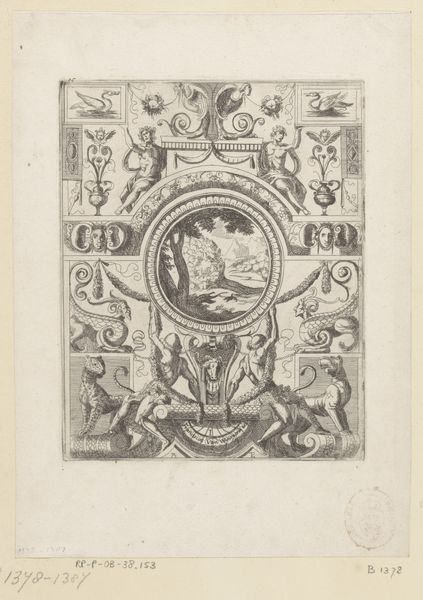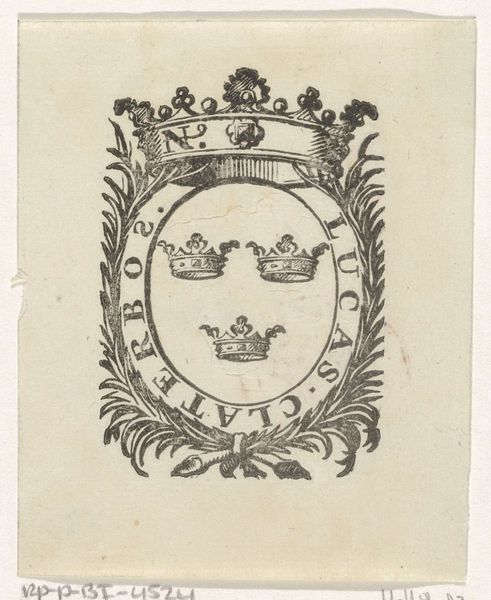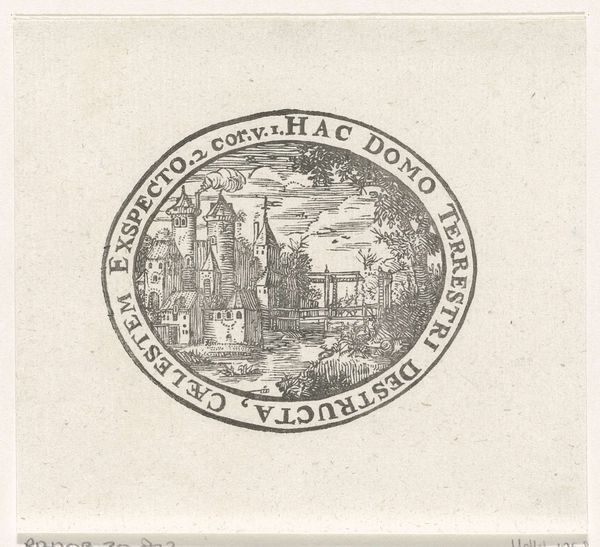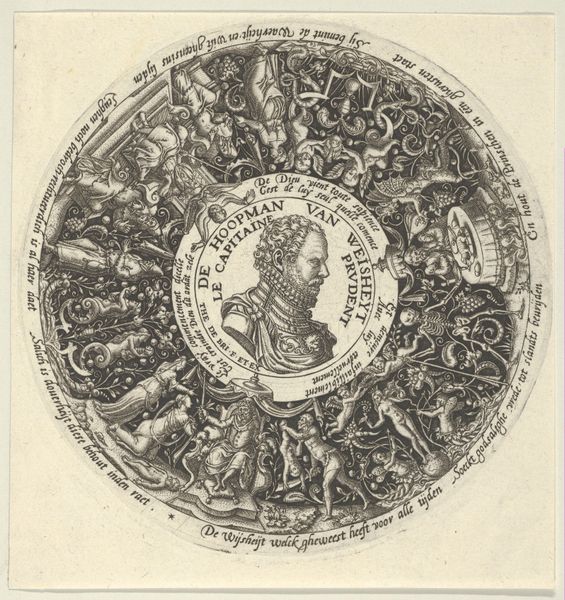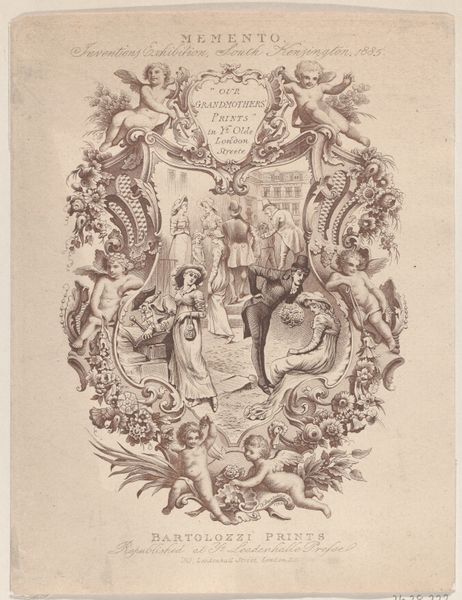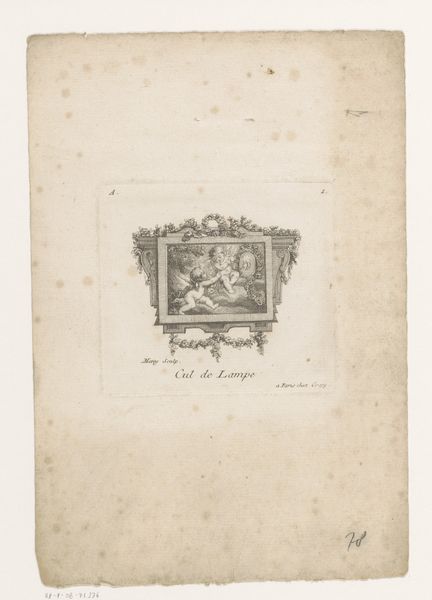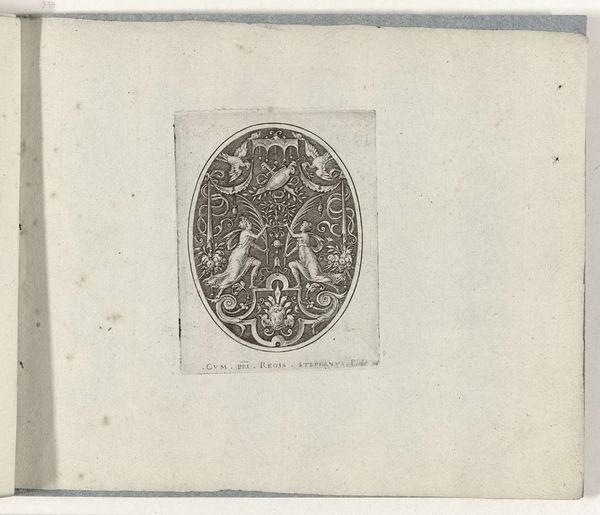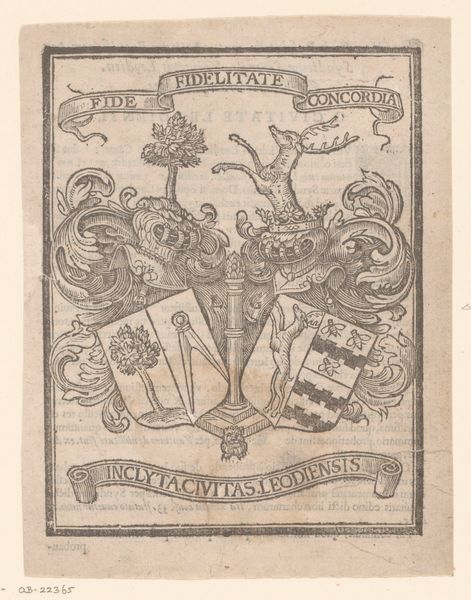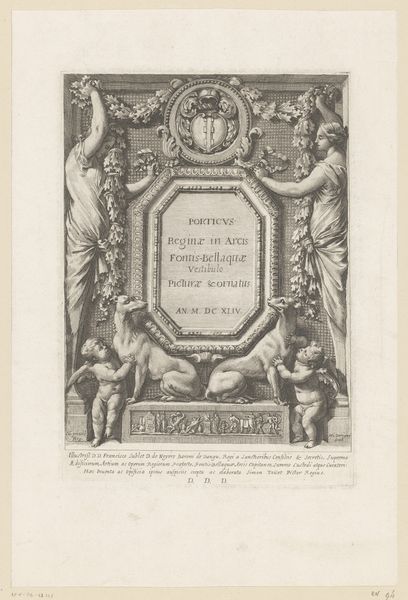
drawing, print, engraving
#
drawing
#
allegory
# print
#
mannerism
#
history-painting
#
engraving
Dimensions: Sheet: 5 3/8 × 4 15/16 in. (13.6 × 12.5 cm) Plate: 2 3/8 × 4 3/4 in. (6.1 × 12.1 cm)
Copyright: Public Domain
Curator: Here we have Theodor de Bry's "Avaritia," an engraving that scholars date around 1590. It is part of the Met's collection, and it encapsulates quite vividly the concept of greed. What strikes you immediately about this work? Editor: Well, its intense composition is initially overwhelming. It’s almost completely filled with figures, objects, and structures fighting for space, giving an impression of disorder and moral chaos that almost emanates off the paper. The tonal range is tight, pushing the eye around within the small compass. Curator: De Bry certainly understood the visual language of moralizing narratives. Notice how the semi-circular composition itself becomes almost like a mirror, reflecting the repetitive nature of avarice? The Latin inscription clarifies this; the truly poor man is not one with too little, but one who always desires more. It echoes sentiments dating back to the Bible. Editor: And the mirroring is accentuated by the inscription itself, which physically frames the composition at the top. Within that semi-circle, de Bry utilizes strong diagonals and counter-diagonals, reinforcing the tension of unrestrained avarice. Curator: The choice to depict avarice through such crowded, frenetic imagery is particularly compelling when you consider its cultural context. This engraving was created during a period of immense social and economic change, with early capitalism emerging, shaking the foundations of traditional social order. Avarice became not just a personal failing but a societal ill, driving people toward obsessive behaviors. Editor: And look at how the texture intensifies in those dense areas; de Bry's linework almost becomes sculptural! By tightly compressing everything into such a restricted form, it magnifies the central vice, creating an image which speaks to how deeply, desperately avarice takes hold of the human spirit. It’s remarkably skillful in this way. Curator: It’s a sharp reminder that even what appears a "new" sin, often has roots going deep into the past, intertwined with our constant need for material gain and power. Editor: Yes, the echoes of its message certainly linger. A masterfully condensed depiction which continues to reverberate through the ages.
Comments
No comments
Be the first to comment and join the conversation on the ultimate creative platform.
